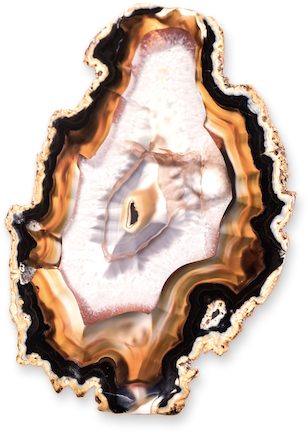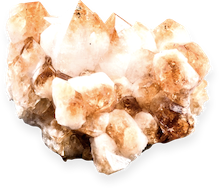Specialties

Amethyst
Amethyst is a purple variety of quartz and owes its violet color to iron impurities. The name comes from the Ancient Greek ἀ a- ("not") and μέθυστοςméthystos ("intoxicated"), a reference to the belief that the stone protected its owner from drunkenness. Rio Grande do Sul, Brazil has the largest collection of amethyst mines, where it occurs in large geodes within volcanic rocks.

Agate
Agate is a cryptocrystalline variety of silica characterized by its fineness of grain and brightness of color. The stone was given its name by Theophrastus, a Greek philosopher and naturalist, who discovered the stone along the shore line of the river Achates. Brazilian Agate is often translucent and can be cut into slabs or slices that reveal their natural colors and patterns.

Selenite
Selenite, is a variety of gypsum with a crystalline structure. The name comes from the Ancient Greek selēnitēs, literally, moonstone or stone of the moon. The ancients had a belief that certain transparent crystals waxed and waned with the moon. Selenite is fairly soft (can be scratched with a fingernail) and the best specimens are transparent or highly translucent and can have inclusions that add to their aesthetic appeal.

Citrine
Citrine is a variety of quartz whose color ranges from yellow to brown due to ferric impurities. Brazil is the leading producer of citrine, with much of its production coming from the state of Rio Grande do Sul. The name is derived from Latin citrina which means "yellow" and is also the origin of the word "citron".

Calcite
Calcite is a carbonate mineral with trigonal-rhombohedral crystals. The crystals are most valuable when the terminations are intact, when they are more translucent / transparent, and when they have druse quartz microcrystals that provide additional sparkle.